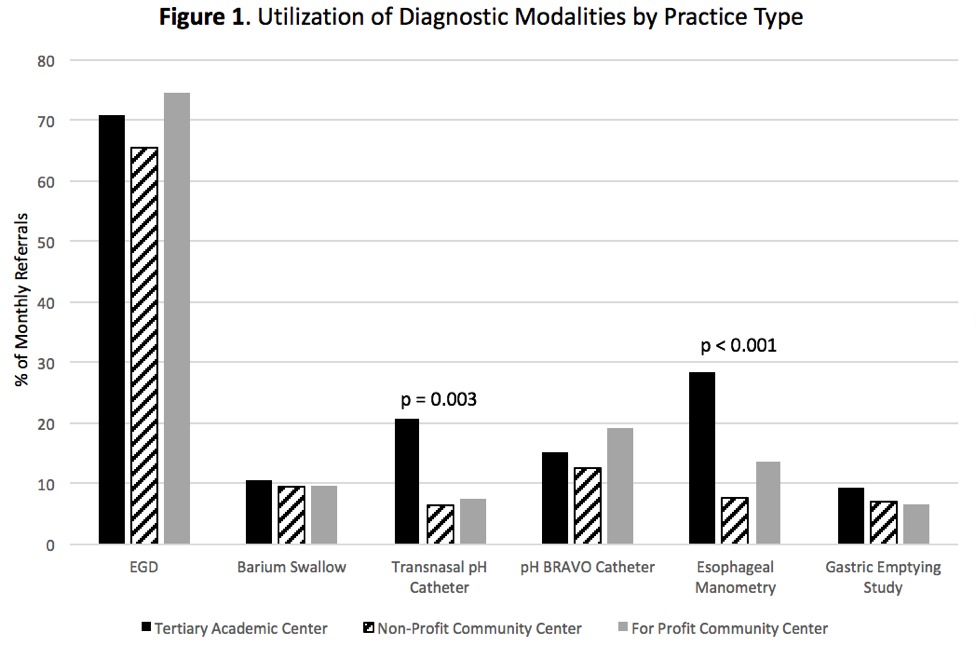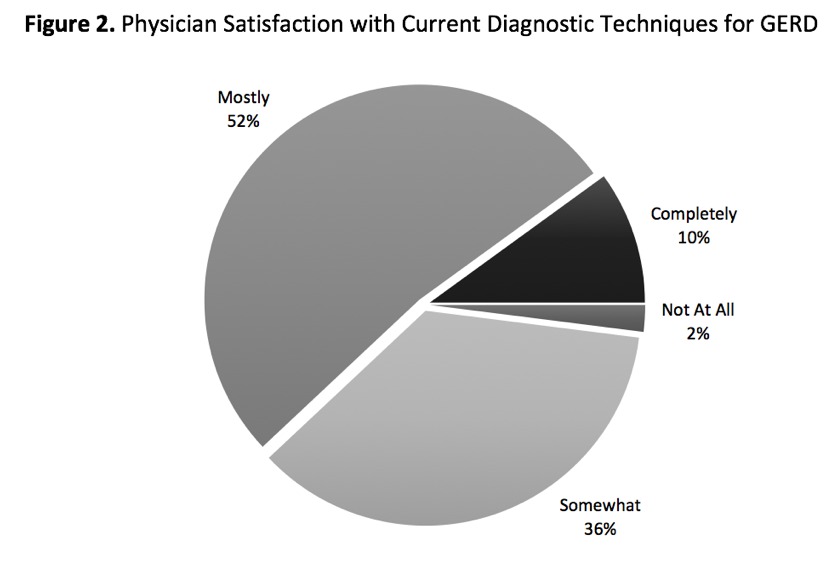|
Back to 2017 Posters
THE NEED FOR IMPROVED DIAGNOSTIC STRATEGIES FOR GASTRO-ESOPHAGEAL REFLUX DISEASE: RESULTS OF A NATIONAL SURVEY OF SURGEONS AND GASTROENTEROLOGISTS
Katherine D. Gray*, Maureen D. Moore, Cheguevera Afaneh, Thomas Ciecierega, Carl V. Crawford, Rasa Zarnegar
New York Presbyterian Hospital - Weill Cornell, New York, NY
Background
Gastro-esophageal reflux disease (GERD) is common in the adult population, but symptoms and presentation vary widely. We aimed to assess the utilization and physician satisfaction of techniques that are currently available for the diagnosis of GERD.
Methods
A survey was designed by gastroenterologists and surgeons with expertise in reflux disease. Using an independent marketing firm, Health Research International, this survey was distributed electronically to gastroenterologists and surgeons in four geographic regions (Northeast, South, Midwest, West) in the United States from October 3-12, 2016. Inclusion criteria were physicians who have been in practice for at least five years and receive a minimum of five GERD referrals monthly. Response type varied by question and was either categorical with a write-in option or rated using a Likert scale.
Results
Completed surveys from fifty respondents (47 gastroenterologists, three surgeons) were collected during the study period. Respondents had an average of 17.4 years (range 5-30) in practice with a median of 50 (range 5-400) GERD referrals per month. Six respondents reported greater than 100 referrals per month; three of these practitioners were in academic centers. Overall self-reported practice locations were: tertiary academic center 17/50 (34%), non-profit community center 15/50 (30%), for-profit community center 18/50 (36%).
The following techniques were cited as useful in the workup of patients with reflux-like complaints: esophagogastroduodenoscopy (EGD), barium swallow, pH monitoring using either a pH catheter or BRAVO, manometry, and gastric emptying studies. The majority of respondents favored EGD as the primary diagnostic modality (employed in 70.5% of referrals), with BRAVO and pH catheter used much less regularly. Utilization of diagnostic technique varied by practice type (Figure 1).
Only 10% of respondents stated that they were “completely satisfied” with current diagnostic techniques for GERD (Figure 2). The following areas with a need for improved diagnostics were identified: patients in whom surgery is required (38%), inconclusive or negative traditional studies (32%), or lack of response to medication (30%). Physicians cited non-erosive esophageal reflux disease (NERD) and patients with atypical symptoms as major challenges to accurate GERD diagnosis.
Conclusion
Gastroenterologists and surgeons are dissatisfied with current methods for diagnosing GERD. There is felt to be a need for improved diagnostic techniques, particularly for patients with atypical symptoms or NERD.


Back to 2017 Posters
|



